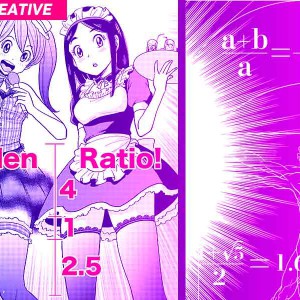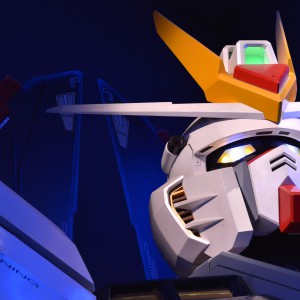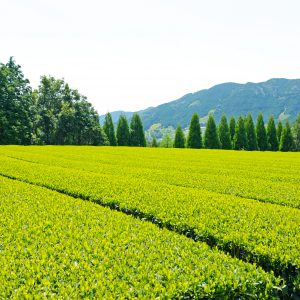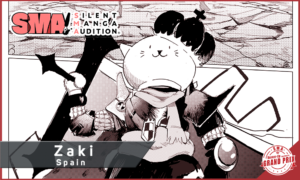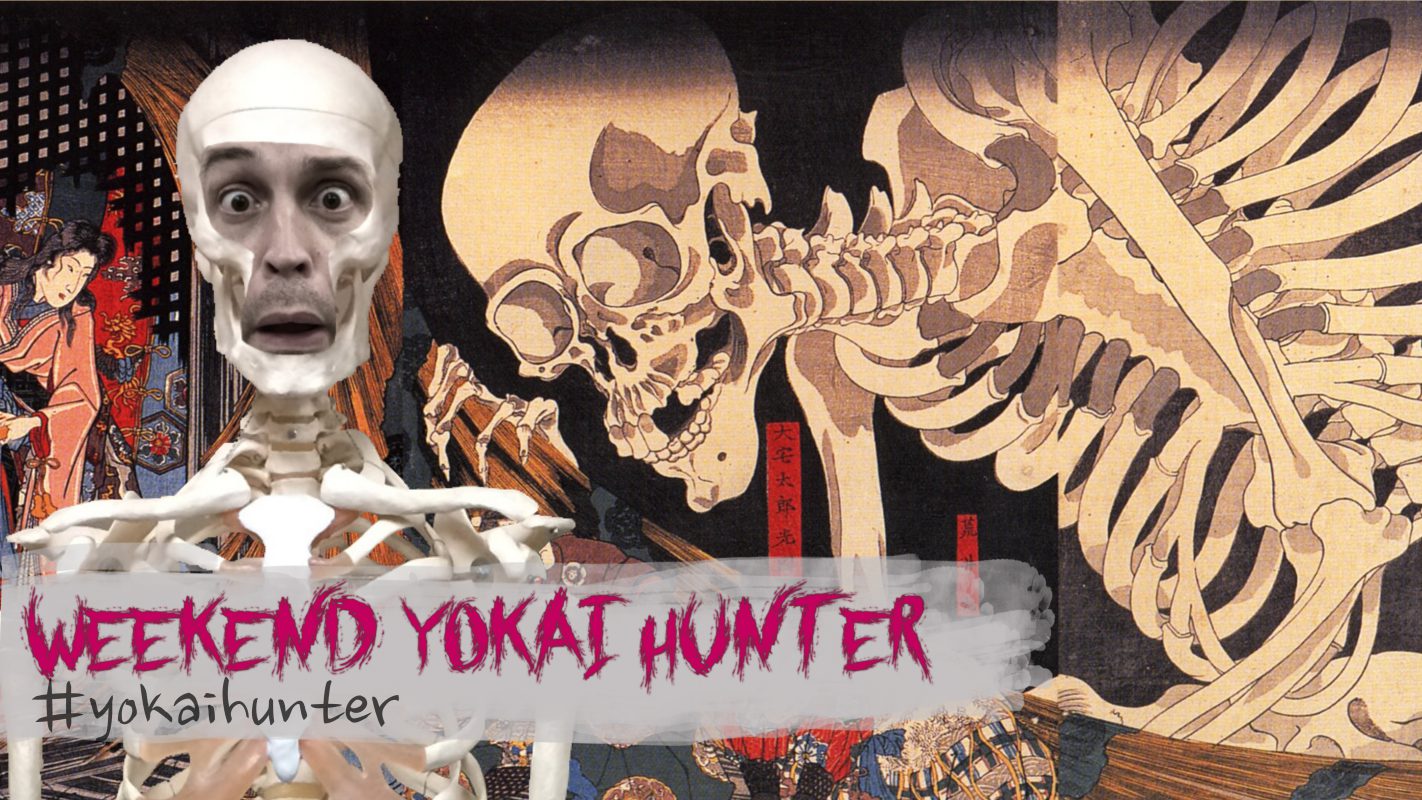
We meet again, my fellow ghoul-loving brethren! How’s everybody enjoying the summer? Well, it’s baking hot right now here in Japan, so what better way to cool off than with an introduction to one of Japan’s most chilling Yokai – the GASHADOKURO!
Like many ukiyo-e prints, I first saw one of these bad boys emblazoned across the back of a t-shirt in a typical airport souvenir store. It was my first visit to Japan and I was flying home to England after an amazing two weeks with bags bursting with purchases, including replica shuriken, a Dragonball keychain and a Gashadokuro T-shirt.
I knew it looked badass, but I had no idea what I was wearing until a few years later when I was back in Japan. My girlfriend questioned my choice of garment when going out for dinner one night… “What’s wrong with my shirt?” I protested, but she just laughed and said “Nothing at all, I’ve just never been to dinner with a Gashadokuro fan before”…
WHAT ARE…Gashadokuro?
Literally translated as “starving skeleton”, there’s nothing particularly unusual about the Gashadokuro’s appearance as it’s just a human skeleton. What makes it strike fear into the hearts of us mere mortals however, is it’s formidable size.

Somebody help meeee!!
Said to originate from Hiroshima, the Gashadokuro is a huge skeleton construct that’s a whopping FIFTEEN times the size of a regular human. Believed to roam the countryside after midnight, the creature fills the air with its rattling teeth and bones, making an irksome “gachi gachi” sound, terrifying the human populous. Gashadokuro are known to creep up and grab unwary, late night travelers, to then bite off their heads before drinking the blood gushing forth from the stumps of their necks. Now THAT’S what I call a bone-chilling though
According to legend, Gashadokuro are created when soldiers or lay folk, die in battle or starve to death in the wilderness. Since death of this nature rarely results in the deceased receiving their proper funeral rites, their souls are unable to pass on to the netherworld and are doomed to roam the world of the living.
With hearts poisoned with anger and pain, the spirits of those deceased are reborn as hungry ghosts that yearn to retrieve what they once lost. Though harmless on their own, when several hundred like-minded spirits converge in the same place, their anger and hatred for humanity becomes concentrated and the bones of their remains rise in unison to form a giant skeleton called a Gashadokuro.
What’s more, they are literally invincible, so they are destined to roam the wilderness until the flame of their hatred eventually dies out. Until that point however, all one can do to escape with one’s life, is run and pray you’re not caught. Alternatively, carrying a Shinto charm is a sure fire way of warding them off.
The good news however, is that because war and famine are no longer a part of everyday Japanese life, the likelihood of enough souls coming together to form one today, is thankfully very remote…
HUNTING FOR…Gashadokuro
With that in mind, you’re probably wondering where we can find one, right? Well, unfortunately (as I’ll explain in the next section) coming face to face with one isn’t as simple as an overnight mountain hike in Hiroshima. In fact, the only place I can guarantee that you’ll be able to see one is on the simply incredible Mizuki Shigeru Road in Sakaiminato, Tottori prefecture. There, you can actually see an amazing array of bronze Yokai statues based on Mizuki’s works, as well as one of the legendary Gashadokuro too. Naturally, the statue has been scaled down but is still definitely worth checking out!

Rural Hiroshima. Don’t be wandering around here after midnight!! m-louis/Flickr
Gashadokuro TODAY!
… Alas, this is where the myth suddenly fades. Gashadokuro you see, are actually a VERY recent Yokai, who only became known to the public when Mizuki Shigeru and occult researcher, Satō Arifumi popularized them through their works in the 1970’s!!
“But wait, what about that famous 18th century woodblock print you’ve got in your banner!?” I hear you ask.
Though very well known, that beautiful piece of art by Utagawa Kuniyoshi called ‘Takiyasha the Witch and the Skeleton Spectre’ doesn’t actually a depict a Gashadokuro. What it depicts, is a mythical scene where Taira no Masakado’s daughter, Takayasha-hime, summons an army of life-sized skeletons to frighten a samurai called Ōya no Mitsukuni. Instead of painting an army of skeletons however, Kuniyoshi depicted one large skeleton instead, and this served to become the foundation image for the late 20th century Gashadokuro! Now you know why there aren’t any places to see them!

The Gashadokuro in Sakaiminato, Tottori! IsaacBordas/Flickr
Despite their recent creation however, Gashadokuro have become a very popular choice of Yokai in modern culture. In addition to Mizuki Shigeru’s ‘Gegege no Kitaro’, they’ve been featured in several manga such as Cocoa Fujiwara’s ‘Inu X Boku SS’, Hiroshi Shiibashi’s ‘Nura: Rise of the Yokai Clan’, as well as Masashi Kishimoto’s hugely successful ‘Naruto’. They’ve even piqued interest overseas, appearing in the 2016 American 3D stop-motion film ‘Kubo and the Two Strings’ and also the animated series ‘Hellboy: Sword of Storms’. Gashadokuro have also graced several video game franchises with their boney presence, appearing in ‘Okamiden’ and ‘Nioh’, being notable examples. With so many appearances over a variety of mediums, I think it’s pretty safe to say that the Gashadokuro’s appeal is going to continue long into the future. Not bad for one of Japan’s youngest Yokai, wouldn’t you say?
And with that, this week’s bone-rattling installment of the ‘Weekend Yokai Hunter’ comes to a close. I really hope you enjoyed learning about Japan’s “baddest-to-the-bone” spirit!
See you next week for more spine tingling tales of Yokai!!






